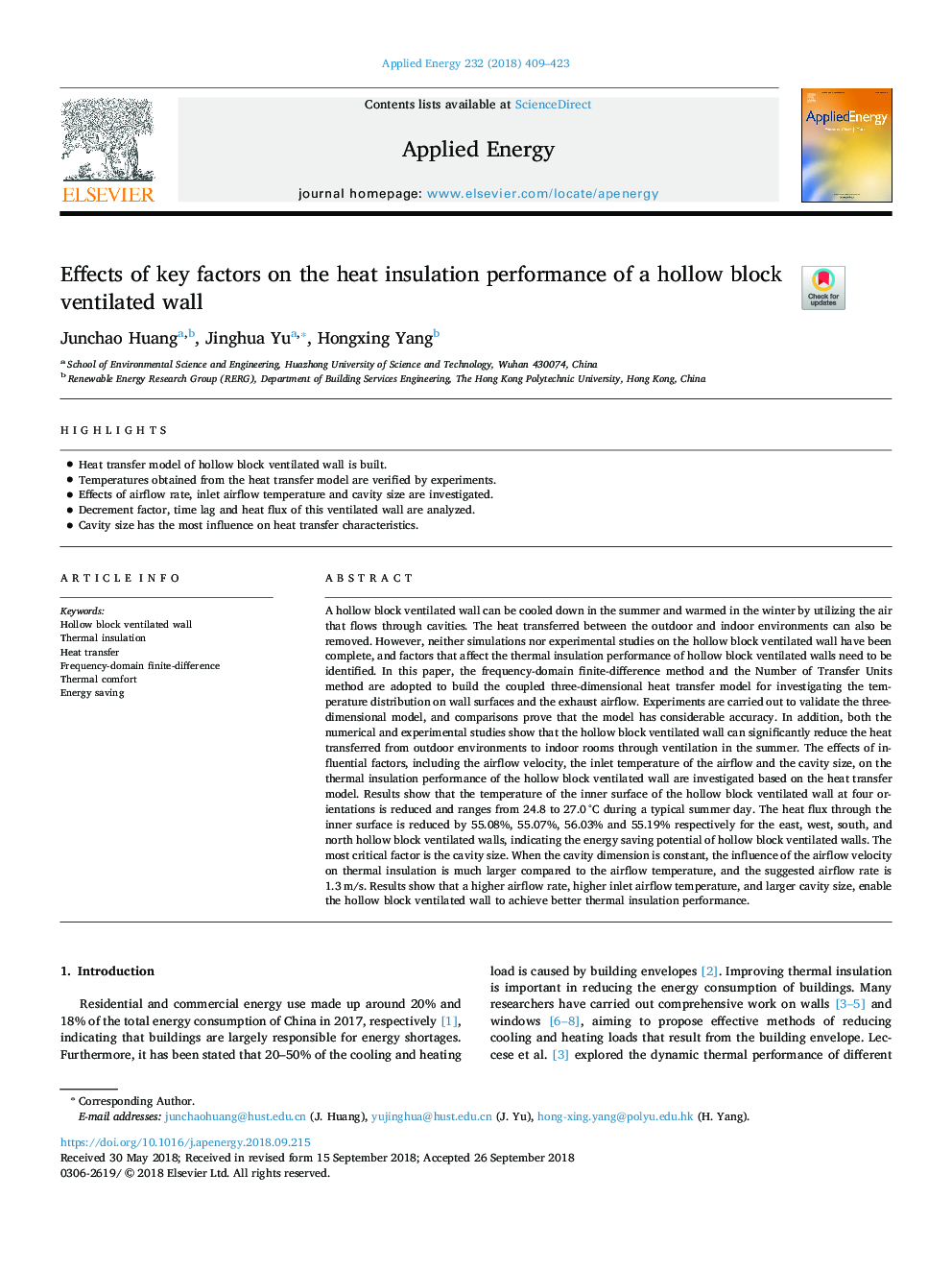| Article ID | Journal | Published Year | Pages | File Type |
|---|---|---|---|---|
| 11017567 | Applied Energy | 2018 | 15 Pages |
Abstract
A hollow block ventilated wall can be cooled down in the summer and warmed in the winter by utilizing the air that flows through cavities. The heat transferred between the outdoor and indoor environments can also be removed. However, neither simulations nor experimental studies on the hollow block ventilated wall have been complete, and factors that affect the thermal insulation performance of hollow block ventilated walls need to be identified. In this paper, the frequency-domain finite-difference method and the Number of Transfer Units method are adopted to build the coupled three-dimensional heat transfer model for investigating the temperature distribution on wall surfaces and the exhaust airflow. Experiments are carried out to validate the three-dimensional model, and comparisons prove that the model has considerable accuracy. In addition, both the numerical and experimental studies show that the hollow block ventilated wall can significantly reduce the heat transferred from outdoor environments to indoor rooms through ventilation in the summer. The effects of influential factors, including the airflow velocity, the inlet temperature of the airflow and the cavity size, on the thermal insulation performance of the hollow block ventilated wall are investigated based on the heat transfer model. Results show that the temperature of the inner surface of the hollow block ventilated wall at four orientations is reduced and ranges from 24.8 to 27.0â¯Â°C during a typical summer day. The heat flux through the inner surface is reduced by 55.08%, 55.07%, 56.03% and 55.19% respectively for the east, west, south, and north hollow block ventilated walls, indicating the energy saving potential of hollow block ventilated walls. The most critical factor is the cavity size. When the cavity dimension is constant, the influence of the airflow velocity on thermal insulation is much larger compared to the airflow temperature, and the suggested airflow rate is 1.3â¯m/s. Results show that a higher airflow rate, higher inlet airflow temperature, and larger cavity size, enable the hollow block ventilated wall to achieve better thermal insulation performance.
Related Topics
Physical Sciences and Engineering
Energy
Energy Engineering and Power Technology
Authors
Junchao Huang, Jinghua Yu, Hongxing Yang,
